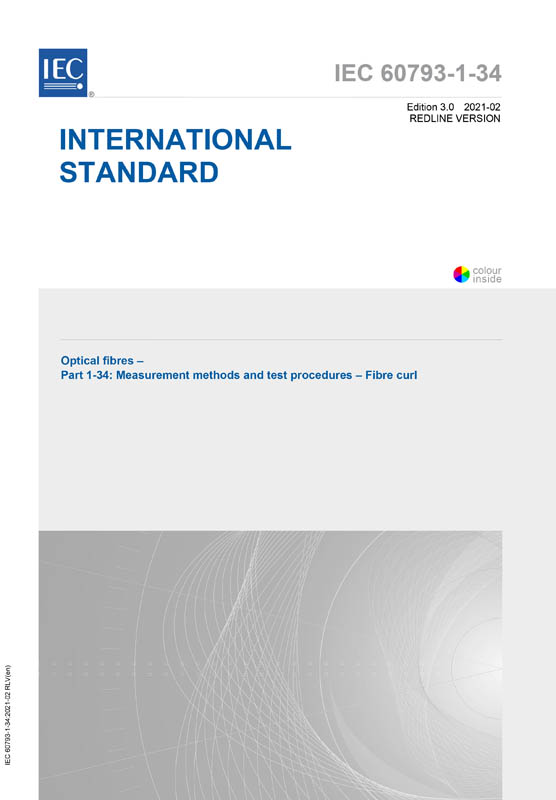IEC 60793-1-34:2021 RLV
Optical fibres - Part 1-34: Measurement methods and test procedures - Fibre curl
Ausgabedatum:
2021-02
Edition:
3.0
Sprache: EN - englisch
Seitenzahl: 54 VDE-Artnr.: 249657
IEC 60793-1-34:2021 RLV contains both the official IEC International Standard and its Redline version. The Redline version is available in English only and provides you with a quick and easy way to compare all the changes between the official IEC Standard and its previous edition.
IEC 60793-1-34:2021 establishes uniform requirements for the mechanical characteristic: fibre curl or latent curvature in uncoated optical fibres, i.e. a specified length of the fibre has been stripped from coating. Fibre curl has been identified as an important parameter for minimizing the splice loss of optical fibres when using passive alignment fusion splicers or active alignment mass fusion splicers.Two methods are recognized for the measurement of fibre curl, in uncoated optical fibres:
- method A: side view microscopy;
- method B: laser beam scattering.
Both methods measure the radius of curvature of an uncoated fibre by determining the amount of deflection that occurs as an unsupported fibre end is rotated about the fibre's axis. Method A uses visual or digital video methods to determine the deflection of the fibre while method B uses a line sensor to measure the maximum deflection of one laser beam relative to a reference laser beam. By measuring the deflection behaviour of the fibre as it is rotated about its axis and understanding the geometry of the measuring device, the fibre's radius of curvature can be calculated from simple circular models, the derivation of which are given in Annex C. Both methods are applicable to type B optical fibres as described in IEC 60793 (all parts). Method A is the reference test method, used to resolve disputes. This third edition cancels and replaces the second edition published in 2006. This edition constitutes a technical revision. This edition includes the following significant technical changes with respect to the previous edition:
- modification of several derivation equations for laser scattering;
- change of angular increment from 10° to 30° to 10° to 45°;
- change of Annex B from informative to normative.


